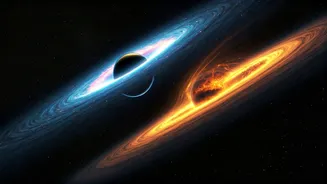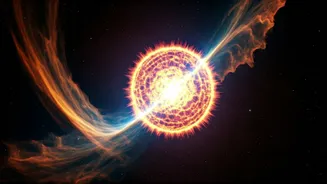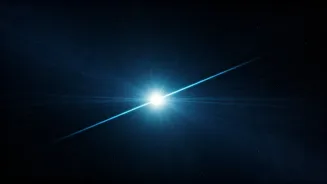What Are Black Holes?
Black holes are regions in spacetime where gravity is incredibly strong. They are formed from the remnants of massive stars that have collapsed under their
own gravity. The gravity is so powerful that nothing, not even light, can escape once it crosses the event horizon, the boundary of the black hole. Black holes aren't just theoretical; they've been observed and studied through various methods, including the detection of gravitational waves. They come in different sizes, from stellar-mass black holes, created by the collapse of individual stars, to supermassive black holes found at the centers of galaxies.
Second-Generation Explained
The term 'second-generation' black holes refers to a specific type, and these are quite fascinating. They are not the first ones to form in the universe; instead, they are the result of the merger of existing black holes. When two black holes collide, they can coalesce into a single, larger black hole. The black hole that is created has characteristics of both original black holes. These second-generation black holes often have properties that offer unique insights into the physics of gravity and the behavior of matter under extreme conditions. The recent detection has provided fresh data to support the study of these phenomena.
LIGO's Role in Discovery
The Laser Interferometer Gravitational-Wave Observatory (LIGO) played a vital role in this new discovery. LIGO is a sophisticated experiment designed to detect gravitational waves, ripples in spacetime caused by accelerating massive objects. Gravitational waves, predicted by Einstein, provide a new way to observe the universe. The LIGO detectors are incredibly sensitive and can measure tiny distortions in spacetime. By analyzing the signals, scientists can gather valuable information about the sources of these waves, including the properties of black holes. The collaboration's findings offer strong validation of Einstein’s theory, adding to the growing body of evidence supporting this fundamental framework.
Spin and General Relativity
The 'extreme spins' of these black holes are particularly interesting. The spin refers to the rotation of the black hole, which is a key property that influences its behavior. Measuring these spins provides crucial data for testing and refining the predictions of Einstein's General Theory of Relativity. General Relativity describes gravity as the curvature of spacetime caused by mass and energy. The theory correctly predicted the existence of black holes and the behavior of their spacetime. The observed spins align with the predictions of General Relativity, affirming the theory's accuracy in extreme gravitational environments. This validation strengthens the theory and helps scientists better understand the universe's mechanics.
Future Implications
The discovery of second-generation black holes offers significant opportunities for future research. It allows for the testing of General Relativity in extreme environments. Continued observation of these black holes may reveal more about the formation, evolution, and interactions of black holes in the universe. Scientists can study a variety of features, including their structure and behavior, and can gain a better understanding of the universe. This includes better understanding dark matter and energy, which remain key areas of inquiry in modern physics. Further studies on this subject could help scientists comprehend complex cosmological phenomena that are beyond today’s understanding. The new data will fuel further analysis and theoretical developments.












